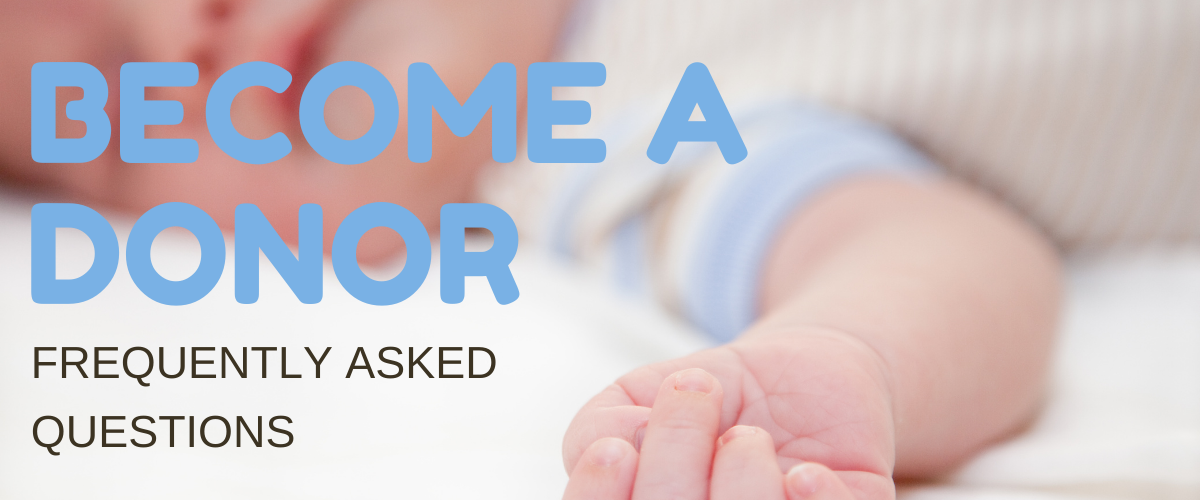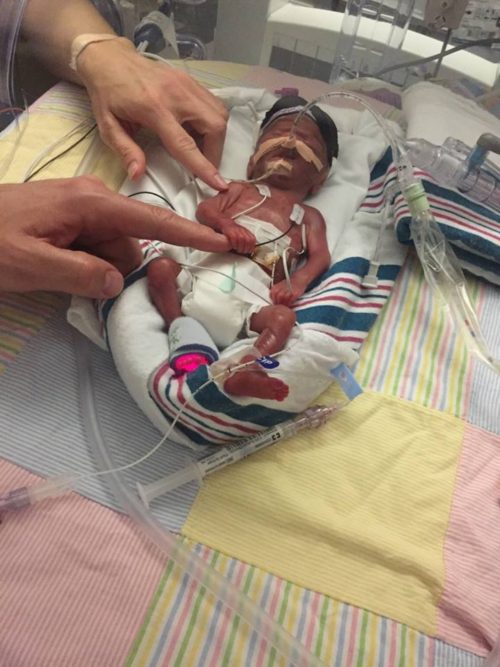
Why collect human milk?
Neonatologists are most concerned about preventing necrotizing enterocolitis (NEC), a disease that attacks the intestinal tract, damaging or destroying it, and requiring surgery to repair or remove the intestines. Emergency surgery on a preterm infant is difficult and dangerous. Mother’s milk makes a huge difference in how well these little babies do after birth because it vastly reduces the incidence of NEC, and it helps to repair the intestines should they become infected. Human milk fights infection while providing ideal nutrition.

Consider:
- 1.5% of extremely preterm infants fed human milk acquire NEC.
- 10-17% of extremely preterm infants fed formula acquire NEC.
- Of those babies who acquire NEC, many die or develop lifelong complications of the illness.

Is donor human milk safe?
Yes. The Mothers’ Milk Bank follows the strict screening, processing, and dispensing guidelines established by the Human Milk Banking Association of North America (HMBANA) to ensure the safety of donor human milk. These guidelines have been established with the advisement of the Centers for Disease Control, the Food and Drug Administration, and the blood and tissue industries. Potential donors provide complete medical and lifestyle histories and undergo blood tests, similar to the screening process used at blood banks. Donated milk is then tested for bacteria and levels of nutrients, and pasteurized to kill any bacteria or viruses. Before the pasteurized milk is dispensed, bacteriological testing is done to ensure its safety.

Why can’t a mother provide milk for her own baby?
A mother may not be able to meet her baby’s needs:
- because of premature delivery, a mother’s milk supply may be delayed or not become established enough to provide sufficient milk for her child.
- if she is pumping for twins or triplets and cannot provide enough.
- due to the stress of having a hospitalized, ill infant whom she cannot hold or directly nurse.
- if she requires medications that may pass into breast milk and are harmful to the infant.
- if she has a chronic infection such as HIV or HTLV, or another medical condition that precludes breastfeeding.
- if she has a breast infection that temporarily affects her milk production.

Who receives donor milk?
Donor human milk (DHM) is dispensed by prescription only. The highest-priority recipients are premature and ill hospitalized infants. Common reasons for prescribing donor milk include:
- Preterm birth, Failure to thrive, Malabsorption syndromes, Allergies, Feeding/formula intolerance
- Immunologic deficiencies, Post-operative nutrition, Infectious diseases
How is donor milk processed?
Frozen donor milk is thawed, nutritionally analyzed, cultured, pooled and poured into bottles, then pasteurized at 62.5 C in a shaking water bath or automatic pasteurizer. Pasteurized milk is quick-cooled, then frozen at -20’C. Microbiological cultures are obtained by an independent laboratory from individual donors’ deposits prior to pasteurization and pooling, and from each batch of milk after pasteurization. This is done to verify that no heat-resistant pathogens are present before pasteurization and that there is zero growth of bacteria after the heating process.
How do Milk Banks do nutritional analysis?
Nutritional analysis is typically conducted using a Foss MilkoScan FT120, full spectrum infrared spectroscopy. This equipment reads fat, lactose, and protein content of the milk, allowing for specific pooling of milk to ensure adequate calories and protein content, and labeling of milk with this information. Knowledge of the nutritional content of milk should allow for targeting milk for specific babies and allow for specific fortification processes.
Is milk banking cost-effective?
Yes! Research shows that necrotizing enterocolitis (NEC), which donor human milk can help prevent, will increase a baby’s length of hospital stay by two weeks at an additional cost of $128,000 to $238,000. In addition, reductions in other complications such as sepsis through the use of donor human milk instead of formula mean that the baby goes home sooner with fewer medical issues – and stays healthier.
Is there a professional organization for milk banks?
Yes. The Mothers’ Milk Bank is one of the milk banks who are members of the Human Milk Banking Association of North America (HMBANA). HMBANA is a multidisciplinary group of health care providers that promotes, protects, and supports donor milk banking. It is the only professional membership association for milk banks in Canada, Mexico, and the United States, and sets the standards and guidelines for donor milk banking in those areas.
Where can I find out more about milk banking?
Learn more about milk banking at the Human Milk Banking Association of North America (HMBANA).
Ready to get started
References
- Oprah Magazine. “One Woman’s Mission to Save Babies.” By Bonnie Rochman. March 2009.
- Newsweek. “Others’ milk.” By Maria Dolan. June 16, 2010.
- Florida Times-Union. Jacksonville, Fl. “ Wolfson Children’s Hospital first in area to offer donated breast milk.” By Jeremy Cox. June 2, 2011.
- The Boston Globe. “ .” By Brenda Goodman. February 14, 2011.
